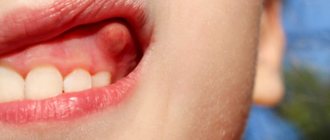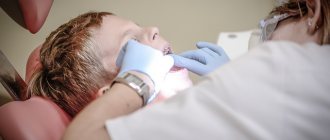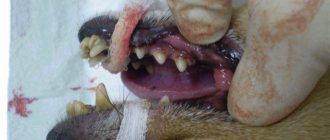Treating gumboil with soda and salt is an effective way to prevent and eliminate unpleasant oral diseases. But before you use it, you need to know the cause of gumboil, what it is, and also be sure to visit an experienced dentist who will first carry out the necessary treatment. After all, soda and salt cannot get rid of already accumulated pus.
Anti-inflammatory pills
Anti-inflammatory drugs for flux have a strong analgesic effect, relieve swelling and reduce inflammation. Some of the medications used can relieve high fever, which sometimes accompanies the symptoms of periostitis.
Nimesil
Flux tablets with a pronounced analgesic effect actively eliminate inflammation at all stages of the disease. The daily dose of the drug is 200 mg (1 tablet of 100 mg twice a day). The duration of treatment depends on the clinical picture of periostitis and the need for treatment of toothache.
Diazolin
A drug for flux from the group of antiallergic drugs. It has a strong anti-edematous effect, reduces the production of biologically active inflammatory substances at the site of abscess development. Diazolin is taken depending on the severity of swelling of the gum and cheek tissues, 1 tablet (100 mg) 1-3 times a day until the condition improves.
Diclofenac
An anti-inflammatory drug that has a powerful anti-inflammatory effect, significantly reduces toothache. To eliminate pain, use 25-50 mg 1-2 times a day.
Types of disease
Flux is classified according to its development into the following types:
- Odontogenic. Pathology occurs against the background of advanced diseases of teeth and gums,
- Hematogenous. The disease develops when infection penetrates through the circulatory system.
- Lymphogenic. The cause of the disease is pathogenic microorganisms in the lymphatic system.
- Traumatic. Flux occurs at the site of injury to the periosteum, often after unsuccessful dental procedures during dental treatment.
According to the degree of spread, the following types of disease are distinguished:
- An ordinary flux that does not affect the periosteum.
- Fibrous flux, characterized by the onset of inflammation in the tissues of the periosteum.
- Orthodogenic flux, which develops as a complication - osteomyelitis, which requires tooth extraction.
- Albuminous flux, characterized by a chronic course, subfertile temperature and the occurrence of suppuration.
How to rinse your mouth with flux
Rinse solutions in the initial stages of the disease can have an anti-inflammatory effect and prevent the development of an abscess. If, nevertheless, the dentist had to open the source of suppuration, he will definitely tell you how to rinse the flux in order to avoid further spread of inflammation and quickly eliminate the symptoms.
Soda
Regular baking soda is the simplest and most reliable remedy for periostitis. It will quickly eliminate swelling, relieve pain for a long time and stop the inflammatory process. To prepare a solution for rinsing from flux, you need to dissolve a full teaspoon of soda in 200 ml of cooled boiled water. Rinse your mouth every 2 hours until the acute manifestations of the disease subside. Then the procedure can be repeated 4-5 times a day until complete recovery.
Rotokan
The basis of the drug is an alcoholic infusion of medicinal herbs: calendula, chamomile and yarrow. Rinsing the mouth with flux with a rotokan solution has an antiseptic effect, reduces painful manifestations, and relieves inflammation. Dissolve 5 ml of the product (1 teaspoon) in a glass of warm water and rinse every 2-3 hours until the pain subsides. In the stage of subsidence of the inflammatory process, the procedure is carried out 3-4 times a day.
Malavit
The drug contains natural extracts of medicinal herbs, silver and copper ions, due to which Malavit has an antibacterial effect, relieves even severe tissue swelling, relieves pain and prevents the spread of infection. 5-10 drops of the medicine should be dissolved in warm, but not boiled water. Rinse your mouth 5-7 times a day until the condition improves. In order to consolidate the anti-inflammatory effect, repeat the procedure three times a day until complete recovery.
Chlorhexidine
The drug has a detrimental effect on almost all groups of pathogenic microorganisms. When applied topically, it has a pronounced anti-inflammatory and wound-healing effect. Mouth rinsing with flux is carried out with a 0.5% aqueous solution of chlorhexidine 4 times a day until the clinical manifestations subside.
Betadine
Thanks to the active iodine included in the drug, betadine perfectly fights pathogenic bacteria, eliminates inflammation, prevents the formation of a purulent focus and promotes the rapid healing of damaged tissues. To prepare a solution for rinsing the mouth, a teaspoon of 1% of the drug is dissolved in a quarter glass of warm water and rinsed 4 times a day until symptoms relieve.
Furacilin
Flux agent with a strong antibacterial effect. To rinse, dissolve 1 tablet of furatsilin in a glass of boiling water. After the solution has cooled, rinse your mouth every 2-3 hours until the pain subsides and the swelling on the cheek subsides.
What EliteDental M dentists recommend
It happens that the patient does not have the opportunity to see a doctor immediately (harmful management at work, urgent matters or meetings, no one to leave the child with, etc.). Therefore, our dentists have put together a number of tips for you to slow down the development of gumboil and relieve primary swelling.
The tips have been tested in practice by our patients and help well as first aid. They work great to prevent the appearance of flux. And yet, you shouldn’t completely forget about visiting the dentist. How to deal with the appearance of flux yourself:
- Rinsing. The most effective is the old-fashioned method of rinsing your mouth with a solution of soda and salt. This will help reduce the number of germs in your mouth, but will not get rid of gumboil. Rinsing has only an external effect. No solution will reach the infection inside the gum.
- Painkillers. When the situation is not reversible, severe pain occurs (gums, headache). You can take your usual painkillers.
- Do not self-medicate. Treatment with folk remedies either helps or worsens the situation. In practice, there have been cases where self-medication led to emergency surgery. Don't guess whether it will pass this time or not. It’s better to make an appointment with your dentist once again. This will save your teeth, money and nerve cells.
Be attentive to your health! Make an appointment with the dentist by leaving a request by mail or by phone +7 (988) 544-63-54 (Zhdanova St. 3), (Mironov St. 6).
Antibiotics
The use of antibiotics is an important point in successful flux therapy. At an early stage, these medications can stop the spread of infection and prevent the appearance of an abscess. At later stages, when a purulent focus has already formed, antibacterial drugs are prescribed after opening it to prevent complications and speedy recovery.
Antibiotics for gumboils should not be taken independently. Only a dentist can give a recommendation which drug should be taken and in what dosage. This will depend on the patient’s age and weight, his condition and the presence of drug intolerance.
The most commonly used antibacterial agents for flux:
- Lincomycin
- Amoxicillin
- Tsiprolet
- Amoxiclav
- Doxycycline
- Ciprofloxacin
- Trichopolum
- Flemoxin solutab
- Biseptol
- Levomycetin
Antibacterial drugs should not be used for less than 5-7 days or stopped after the condition improves. This can cause drug resistance in the microorganism that caused the flux, and lead to loss of effectiveness of the drug if the disease reoccurs.
Ointments and gels
Local use of ointments for periostitis contributes to the rapid extinction of inflammatory processes, faster healing of damaged tissues, and effective elimination of pain.
Vishnevsky ointment
With flux, Vishnevsky ointment can stop the development of the purulent process, quickly eliminate tissue swelling and relieve toothache. The xeroform included in the drug has an antibacterial effect, birch tar increases blood flow at the site of injury, and castor oil promotes deeper penetration of medicinal components.
Vishnevsky ointment is used in the initial stages of the disease or after opening the abscess. The drug is applied to a sterile small gauze pad and applied to the skin of the cheek in the area of inflammation for several hours.
You cannot use Vishnevsky ointment if you suspect the presence of a purulent focus at the site of periostitis. This can cause worsening of the condition and the development of complications.
Metrogyl denta
The drug is available in the form of a gel, which contains antibacterial components: metronidazole and chlorhexidine. Therapeutic substances penetrate perfectly into the source of inflammation, quickly relieve pain, eliminate tissue swelling and prevent the development of purulent complications. The gel is generously applied directly to the gum mucosa above the site of periostitis. After using it, you should refrain from drinking or eating for at least 30 minutes. The procedure is repeated three times a day until the inflammatory reactions subside.
Levomekol
The ointment contains ingredients that have a wide spectrum of antibacterial activity and promote rapid tissue regeneration. Levomekol does not lose its properties in the presence of pus, therefore it is preferable in cases where it was not possible to avoid the process of suppuration. The ointment is used three times a day. It is applied to a sterile gauze or cotton swab and applied to the flux for 2-3 hours. If a purulent focus has been opened, the drug can be injected directly into the resulting cavity. It is necessary to treat dental flux with Levomekol until complete recovery.
Compresses and lotions
Compresses and lotions have an analgesic effect, limit the spread of the inflammatory process, and have a detrimental effect on pathogenic microorganisms.
Compresses with dimexide
Dimexide, when applied topically, perfectly penetrates into the inflammatory focus, inhibits the vital activity of microbes and increases their sensitivity to antibiotics. It is also able to eliminate pain. For a compress with flux, dimexide is diluted with warm water to a solution concentration of 20-30% (80 ml of liquid per 20 ml of the drug), after which a sterile napkin made of several layers of gauze is moistened with it. The compress is applied to the cheek in the affected area. The duration of the procedure is 1-2 hours. Repeat twice a day until pain and signs of inflammation are eliminated.
Before using Dimexide for the first time, it is necessary to test for an allergic reaction on the back of the elbow.
Lotions with soda
To treat gumboil, wrap a teaspoon of baking soda in several layers of gauze and place it between the cheek and gum for several hours. This will reduce swelling and relieve toothache. The lotion must be repeated 2-3 times a day.
Compress with salt
Salt has an anti-inflammatory effect, quickly relieves pain and reduces inflammation. To prepare a compress, dissolve 2-3 teaspoons of salt in 100 ml of warm water. A gauze or cotton swab is moistened with the solution and placed between the sore gum and cheek. Every 2 hours, change the compress to a new one until the acute symptoms subside.
It is better to use sea salt, which, due to the presence of iodine components, helps to relieve inflammation even better.
It is impossible to cure gumboil yourself without the participation of a dentist. Self-medication can be not only ineffective, but also dangerous. At home, you can only carry out those therapeutic procedures that have been recommended by a specialist.
Why does pathological formation occur?
The main reason for the development of the pathological process is injury to the soft tissue of the gums. The disease also often develops against the background of:
- Caries.
- Inflammation of the gum pocket.
- Violation of the rules of oral hygiene.
- Infectious diseases: tonsillitis, furunculosis, etc.
Pathology is characterized by gradual development:
- The initial stage is characterized by the appearance of mild pain when touching the gums.
- In the second stage, swelling and redness of the gums develop, and the pain becomes intense.
- If left untreated, pus appears in the gum pocket, body temperature rises, and swelling spreads to the cheek.
- Next, an extensive inflammatory process develops, characterized by the appearance of acute throbbing pain and an increase in the area of edema. The patient's general condition deteriorates significantly.











